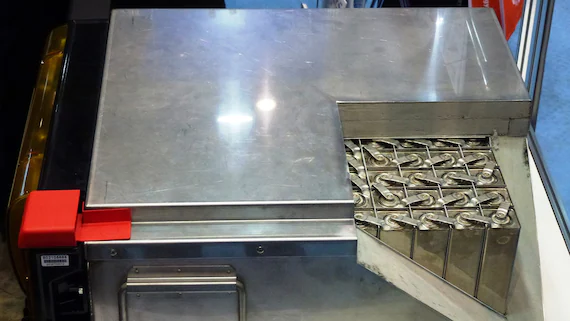Salt batteries how they work, pros and cons and what the main uses are
There are many technologies on the market for storing energy but, of all of them, the most discussed is probably the salt battery. To put it in more technical terms, these are molten salt batteries that accumulate energy in the form of heat - we therefore speak of thermal batteries. Within this family of devices, the ones that have attracted the most attention are those that contain nickel and sodium chloride, i.e. the very common "table salt". Let's try to understand together how these batteries are made, how they work and what are the pros and cons of this alternative lithium technology
How are salt batteries made?
Also known as ZEBRA, from the initial project called "ZEolite Battery Research Africa", salt batteries are made up of several components. In the charged state each cell consists of a negative electrode of liquid sodium (anode) and a positive solid electrode of nickel and nickel chloride (cathode). A ceramic tube separates the two electrodes, called a beta-aluminate [β-Al2O3] ceramic electrolyte. A molten secondary electrolyte called tetrachloroaluminate (NaAlCl4) near the positive electrode is used to ensure contact between the solid positive electrode and the ceramic electrolyte. Molten salt batteries, and in particular those with table salt, work at high temperatures to melt an element of which they are composed. In the case of salt batteries, the melting temperature of sodium (97.8ºC) must be exceeded. Furthermore, the ceramic electrolyte becomes a solid but conductive membrane for the passage of [Na+] ions above 300°C. Consequently, these batteries work at around 270-350°C
How do salt batteries work?
During the battery charging phase, salt [NaCl] is split into sodium [Na] and nickel [Ni]. The latter binds to chlorine forming nickel chloride [NiCl2]. When the full charge is reached, when all the salt has been consumed, there is a protection mechanism which allows the passage of current to be interrupted.
During discharge, i.e. during use of the battery, the reverse reaction occurs, to release energy. Sodium is ionized into [Na+] ions forming new salt, while nickel chloride is reduced to metallic nickel [Ni]. The chemical reaction is expressed as follows:
2Na + NiCl2 = 2NaCl + Ni
During the discharge phase the reaction should be read from left to right, while during the charge phase from right to left. Table salt is therefore a reactant during the battery charge phase, while it becomes a reaction product during the discharge phase.

credit Rudolf Simon
Pros and cons of salt batteries
Let's briefly see what are the main advantages and disadvantages of this technology.
Benefits
Although not yet widespread, salt batteries have many advantages. In particular, they are not toxic to humans, are recyclable and do not present any fire risk. They have a long life (expected around twenty years) and do not require maintenance. Their operation is guaranteed even at low ambient temperatures, thanks to a good thermal insulation which insulates the hot body of the battery from the outside and their efficiency does not decrease with use (therefore they do not suffer from the so-called memory effect). For what reason? Simple: these batteries are insensitive to variations in ambient temperature precisely because they operate at a high and constant temperature, using part of the energy to heat up.
Disadvantages
On the other hand, this type of battery has some limitations. For example, after being fully discharged, the battery begins to cool down and reaches room temperature in about 200 hours. Once unloaded and cooled, it needs 10-12 hours to reach its internal operating temperature (the famous 270-350°C we mentioned earlier), before being able to start the recharging process again. In short, this type of battery is not functional for rapid recharges or irregular uses: if it is not used daily or with a certain regularity, it discharges itself and takes a long time to become operational again.
Are there products with salt batteries?
Now let's see where we are with the use of these particular batteries. In the last decade many projects have been born for the production, management and use of self-produced energy from renewable sources. Some of these use salt batteries, such as the Gervasutti bivouac on Mont Blanc, with a 7.8 kWh storage system. Other similar applications concern housing modules up to 19 kWh.
Bibliography
Encyclopedia of Electrochemical Power Sources
Mechanical Energy Storage Technologies
Electrochemical Power Sources: Fundamentals, Systems, and Applications